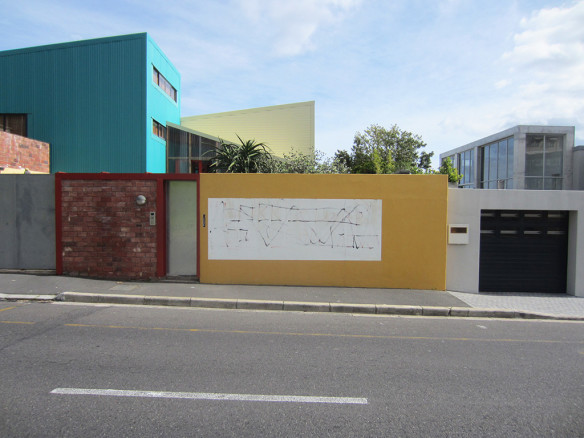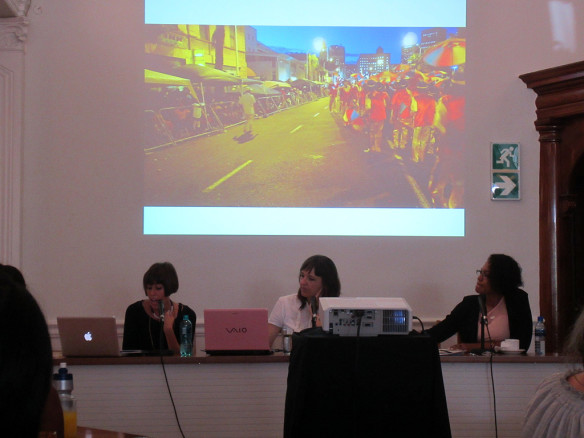In September 2013 I delivered a lecture at the Open Book Festival in Cape Town titled ‘Design Fiction’, in which I explored design (especially designed objects) as a story-telling medium. From the festival programme: “Contemporary design projects are often a form of story-telling, used to communicate narratives to users and audiences. Ralph Borland explores examples of where design, for better or worse, acts as a form of fiction that is sometimes at odds with its intended purpose”.
I opened my presentation with a photograph of ‘Blikkiesdorp on Ocean View Drive’ – the architect Carin Smut’s home in the upmarket area of Seapoint in Cape Town, which was graffitied with a disparaging message (since lovingly preserved by the architect) because of her use of corrugated iron in its design. ‘Blikkiesdorp’, literally ‘tin can town’, is a reference to a bleak shanty town on the outskirts of Cape Town. I used this anecdote as a talking point around how even simple materials can have strong communicative and symbolic properties, and particular connotations for viewers – here residents were unhappy about a ‘shanty town’ material used in an upmarket area.
I moved from there through a range of examples of objects which can be ‘read’ in particular ways – like our propensity for seeing faces in objects – through the role of objects in narratives (knives in Cormac McCarthy or Borge’s work for example) and objects deliberately designed to be characters in a wider story (such as critical designers Dunne & Raby). This set up a discussion of the role of ‘objects in development’, the subject of my PhD thesis, centred around the PlayPump.

